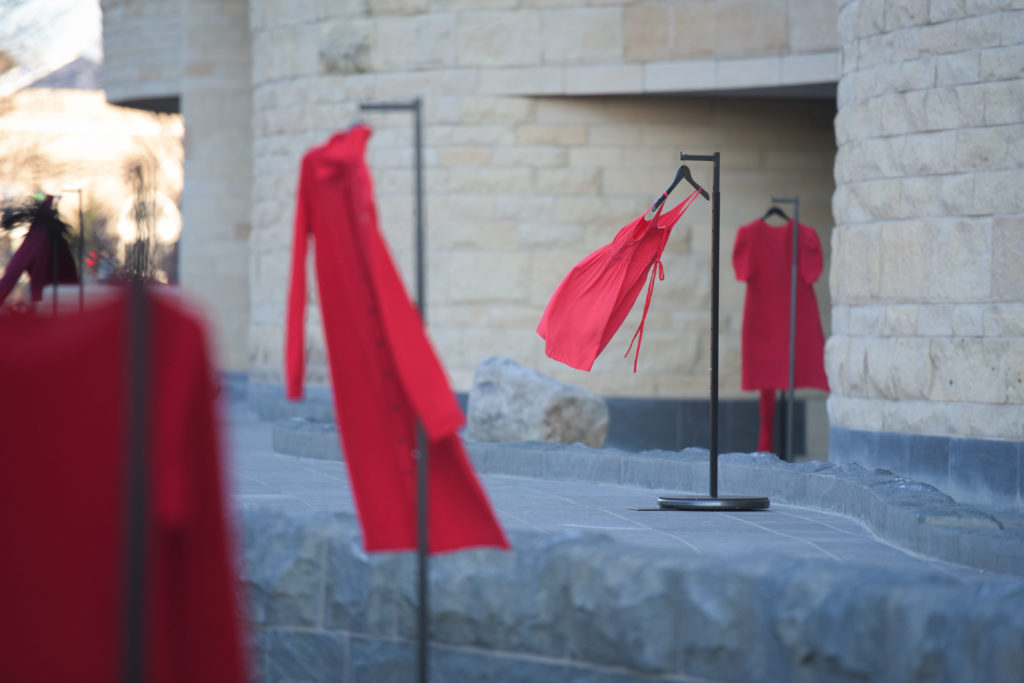An exhibit that highlights missing and murdered indigenous women opened at the National Museum of the American Indian Friday.
The exhibit “The REDress Project” by Canadian artist Jaime Black features 35 dresses hanging outside the north side of the museum, and it will be on display until March 31. Each dress, which Black has been collecting since 2011, hangs on its own and represents missing or murdered Native women – who “disproportionally” disappear or are murdered within Native communities, Machel Monenerkit, the deputy director of the National Museum of the American Indian, said.
The National Crime Information Center found in 2016 that 5,712 Native women and girls were reported missing, but the U.S. Department of Justice had only logged 116 cases into its missing persons database, according to a report by the Urban Indian Health Institute. The report also cites murder as the third-leading cause of death among Native women.
Monenerkit said the museum hopes to bring national attention to violence against Native women through the exhibit.
“Violence is a women’s issue, but for Native women, it affects Native women at a disproportionately high level for rape, domestic violence and attack,” Monenerkit said.
Monenerkit also said she hopes the exhibit will help in bringing “national attention” to this issue, which she said does not get enough media coverage.
“This is an issue that happens for indigenous women whether it be in rural reservation border town settings or in urban cities where there is a high population of Native women,” she said. “And even in the urban cities the inadequate media coverage does not bring attention to this topic.”
While Monenerkit expects each visitor to have their own “personal experience as they walk through the dresses,” she also said the experience will be emotional for museum-goers.
“The visitor will have their own personal experience because it will be tied to their history or if they’ve had an experience of an attack or know someone that’s missing or murdered,” she said.
In conjunction with “The REDress Project,” the museum is also offering an array of programming throughout Women’s History Month including a performance art piece in which Black will interact with the dresses and the landscape on March 21. Black will also sit on a panel – “Safety for Our Sisters: Ending Violence Against Native Women” – with other native artists, activists and scholars who will share stories about violence against indigenous women.
Lindsay Paulen and Anna Boone contributed reporting.





